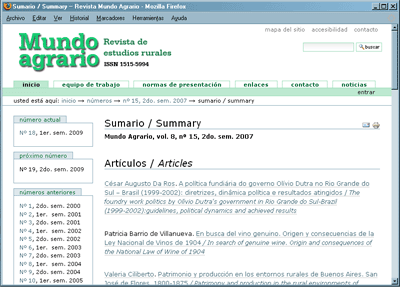The indigenous world in front of the state dominance. Norpatagonia, ends of the XIX century - principles of the XX century
Main Article Content
Abstract
The objective of the present work is the analysis of the transformations of the indigenous world during the immediately later years to the Military Campaigns of ends of the XIX century, highlighting its strategies of adaptation before the new relationship with the National State. Then, the changes in the indigenous sociopolitical organization and in their economic relationships by virtue of their new articulation with the state society, are focused through different case studies: submitted tribes voluntarily and relocated in lands assigned by the State; and family groups that, in spite of being isolated of their traditional tribal bonds, maintained their ethnic identity and certain degree of social and economic autonomy. The cases are developed in the territory of the current province of Neuquén , between 1882 and 1919, and they are reconstructed thanks to documents of the Archive Provincial Historical and of Lands and Colonies of the province of Neuquén . These situations present a complex dynamics in which the diversity of continuities, substitutions and disappearances are integrated inside oneself logic of survival, passing over the traditional vision of a contradiction between resistance and assimilation.
Downloads
Download data is not yet available.
Article Details
How to Cite
Habegger, V. (2007). The indigenous world in front of the state dominance. Norpatagonia, ends of the XIX century - principles of the XX century. Mundo Agrario, 8(15). Retrieved from https://www.mundoagrario.unlp.edu.ar/article/view/v08n15a08
Issue
Section
Dossier: Resistance and adaptation between the indigenous groups of pampa and patagonia (XVII and XIX centuries)
Works are released under a Creative Commons License (Creative Commons 4.0. Atribución-NoComercial-CompartirIgual) which provides unrestricted use, copy and redistribution in any medium or format and remix, transform and build upon the original work properly cited. The Creative Commons License stipulates that: "You must attribute the work in the manner specified by the author or licensor (but not in any way that suggests that they endorse you or your use of the work)."
